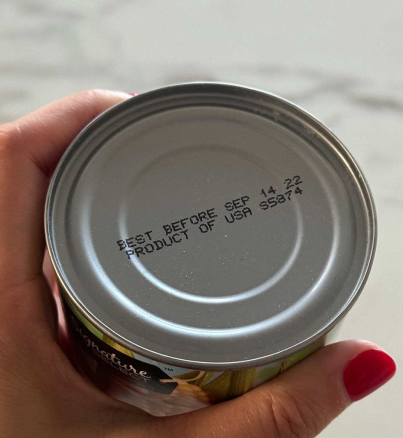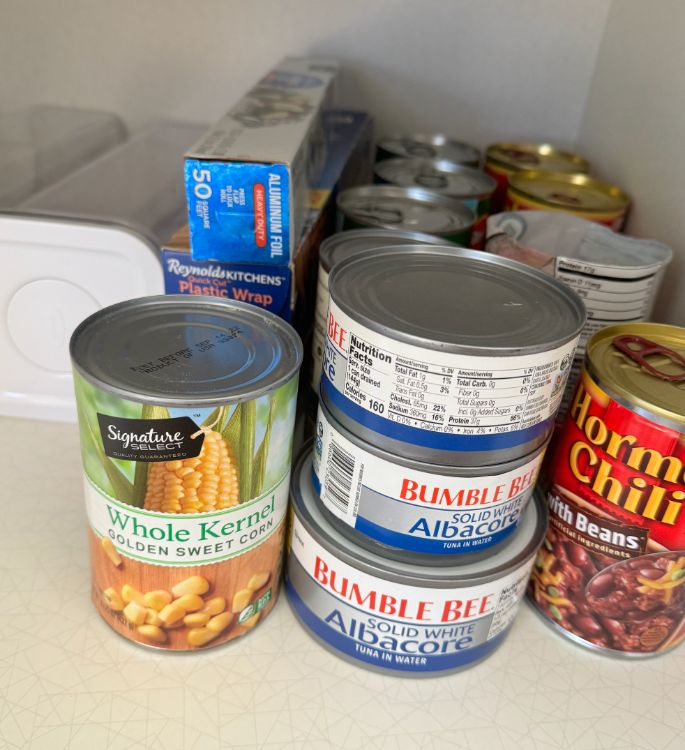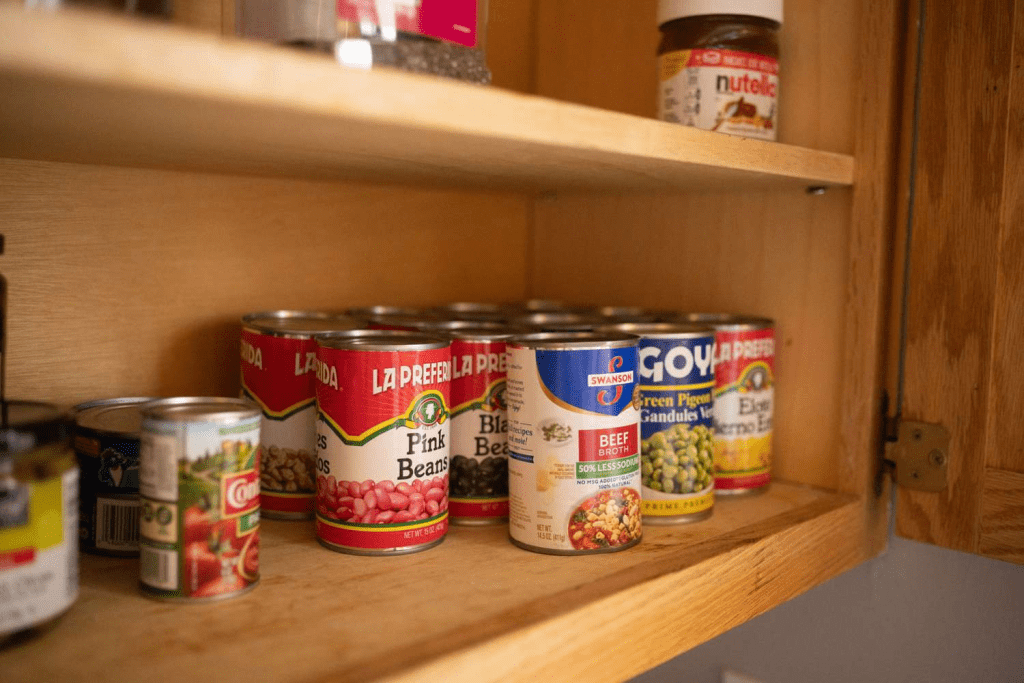When it comes to those “best by” or “best before” dates printed on food labels, many of us tend to toss out anything that’s even a day past the date. However, this approach often leads to unnecessary waste, especially when dealing with canned foods like corn, green beans, and tuna. It’s essential to understand that these dates are often about quality, not safety. Let’s dive into how you can interpret these dates, check for signs of spoilage, and make informed choices to reduce food waste in your pantry.
What Do ‘Best By’ Dates Really Mean?

The “best by” date isn’t a hard expiration date. Rather, it’s a manufacturer’s way of indicating when the product is at its peak flavor and texture. This is not to say the food is unsafe after this date—many canned goods can last years if stored properly. However, the quality might begin to diminish, meaning the flavor or texture may not be as perfect as intended. Knowing this distinction can save you from throwing away food that’s still perfectly safe to eat.
Quality vs. Safety in Canned Foods
For canned foods, “best by” dates are more about quality assurance than safety. These items are designed to be shelf-stable for long periods, often extending well beyond their labeled dates. So, if you’ve got a can of corn that’s a few months or even a couple of years past the “best by” date, it’s worth taking a closer look before deciding to discard it.
Canned Corn: How Long Can You Keep It?
Canned corn is a popular pantry item and can usually be stored safely for 1-2 years past its “best by” date, provided it’s kept in the right conditions.
Storage Tips for Canned Corn
To keep your canned corn in prime condition, store it in a cool, dry place. Temperature extremes or direct sunlight can compromise the quality and safety of canned foods.
Checking for Spoilage
When you’re ready to use that old can of corn, do a quick inspection. Watch for any dents, bulges, or leaks in the can, as these can indicate bacterial contamination. If everything looks normal, open it up, give it a quick smell, and check for any unusual signs before use. Typically, properly stored canned corn remains safe and edible even if it’s slightly past the “best by” date.
Canned Green Beans: Are They Safe After the Date?
Similar to corn, canned green beans are often still good past their labeled date, usually up to 1-2 years.
Key Checks for Quality
When dealing with older cans of green beans, check for rust, dents, and any swelling on the can. Even minor dents can indicate possible contamination, so handle with care. If the can passes the visual test, open it and inspect the beans for any off smells or discoloration. Green beans may lose a bit of their original crispness and vibrant color over time, but if they look and smell fine, they’re likely safe to eat.
Optimal Storage for Freshness
Keeping canned green beans at room temperature or slightly cooler will help preserve their quality. Avoid storing them near appliances that emit heat, as it can shorten their shelf life.
Canned Tuna: A Long-Lasting Protein Source

Canned tuna has an impressive shelf life, often lasting up to 3-5 years beyond the “best by” date when stored properly. This makes it an excellent option for long-term storage.
How to Tell if Tuna Has Gone Bad
Before you open a can of tuna, inspect it for any signs of rust, dents, or leaks. Once opened, tuna should have a mild scent. A strong or sour odor is a sure sign that the tuna has spoiled and should be discarded.
Using Canned Tuna Beyond the Date
If the tuna passes all your checks, it can be a nutritious addition to salads, sandwiches, or casseroles. Just remember to store it in a cool, dry place to maintain quality.
Best Storage Practices for Canned Foods
Even though canned foods are generally shelf-stable, proper storage practices can significantly extend their life and quality. Here’s a quick guide to storing your canned items for optimal freshness.
Cool and Dry Location
Your pantry is ideal for canned goods, but ensure it’s not near any heat sources like stoves, ovens, or heaters. Temperature fluctuations can weaken the seal on cans over time.
Store Upright and Handle with Care
Storing cans upright helps keep the contents stable and reduces the risk of contamination. Additionally, avoid dropping or denting cans, as even minor damage can affect the integrity of the seal.
First-In, First-Out Principle
When you add new canned items to your pantry, place them behind older cans. This way, you’ll use the older ones first, ensuring nothing goes to waste.
Recognizing Spoilage in Canned Foods
Even with careful storage, some cans may spoil over time. Here are a few signs of spoilage to watch for when inspecting canned goods:
Bulging or Swollen Cans
A bulging or swollen can is a significant red flag, indicating bacterial growth inside. These cans should never be consumed and must be discarded immediately.
Rust or Corrosion on the Can
Rust can weaken the metal, allowing bacteria to enter and spoil the contents. If you see rust, especially near the seal, it’s best to dispose of the can.
Odd Smells or Textures
Once you open a can, pay attention to any unusual smells or textures. If the contents smell sour or have an odd appearance, discard them. It’s always better to be cautious with questionable canned foods.
Why Keeping Canned Foods Beyond ‘Best By’ Dates is Beneficial

Using canned foods past their “best by” date can help you reduce waste and save money. Since canned goods are packed at peak freshness, they often retain their nutritional value well beyond the printed date, providing a reliable source of nutrients. By understanding the true meaning of “best by” dates, you can make the most of your pantry stock, prevent food waste, and keep your grocery bills in check.
Reducing waste isn’t just good for your wallet; it’s also great for the environment. When you use up canned goods instead of throwing them out, you’re reducing the amount of food that goes to waste, contributing to a more sustainable lifestyle. The next time you see a can that’s past its “best by” date, give it a second chance—inspect it, smell it, and if it’s good, enjoy it!
Conclusion
Understanding “best by” dates on canned foods empowers you to make informed choices about what’s truly safe to eat and what might need to go. Remember, these dates are primarily about quality, not safety, and many canned items can last well beyond the printed date. By following simple storage and inspection tips, you can keep your pantry stocked, reduce waste, and enjoy safe, nutritious meals from foods you might have otherwise thrown away.
So, next time you’re about to toss a can that’s slightly past its date, take a moment to assess it—you might just be able to save a meal and make a positive impact on the environment.


